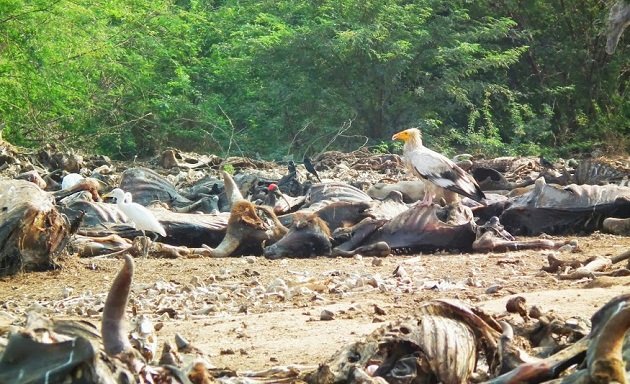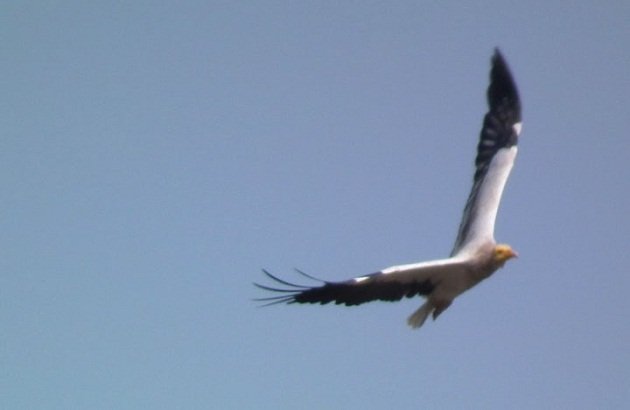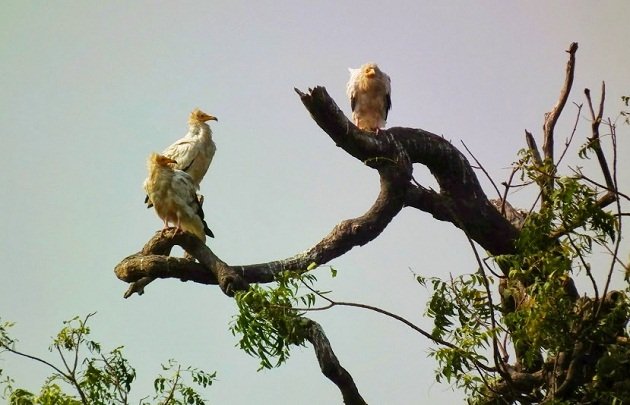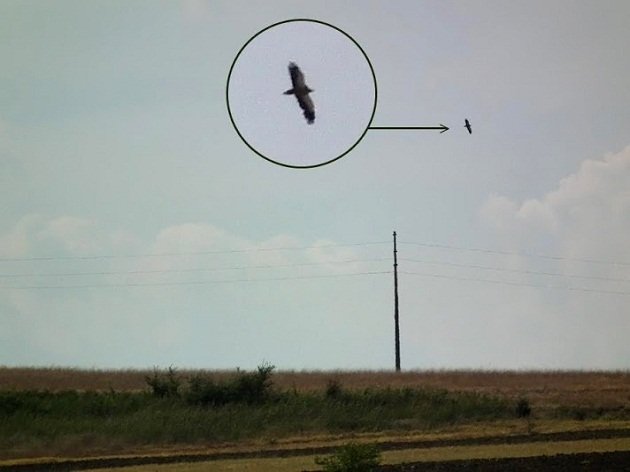
Scientific papers are simply boring. That is why they have sections Abstract and Summary, to allow you to read the digested versions and skip the rest. Somehow, it seems, beginners writing their first papers ask their older colleagues for advice and hear something like: That writing of yours is way too amusing – that is not the way to build the career! Get more serious, if you want to be taken seriously… And so, the aspiring scientists soon learn that the absolute highlight of scientific writing is – boredom!
Hence, I was quite surprised with a brave, almost exciting paper by Brown, Forbes and Symes: “Recent history of the Egyptian Vulture in Southern Africa” (Vulture News, 2000). The authors have analysed known historical data and turned everything that I have read previously upside down. In short, the accepted view used to be that a small breeding population of Egyptian Vultures inhabited Southern Africa, but has vanished facing the spread of towns, roads and farms. But, from the existing data, the authors have drawn a different conclusion – there is no proof that the breeding population ever existed, that the south of Africa was beyond the species range and that that all observations were of vagrant individuals.
At the time, I was an active volunteer in an organisation soon to become the BirdLife Botswana and have noticed that Brown, Forbes and Symes quoted only two out of five Botswana observations accepted by the Rarities Committee, so I wrote to the Vulture News editor, suggesting that I write a short note on all five observations. It was not the first note I have published, but was the only one about a bird I have never laid my eyes upon!
During my lifetime, this species was rare in my native Serbia, too. In the 1970s we had two to four breeding pairs, in the 1980s one to two, in the 1990s it was zero to two (irregular breeding). In the 21st century the Egyptian Vulture is an extinct species in Serbia; although we do occasionally have one bird in the Uvac Gorge Griffon Vulture Sanctuary and hope that it might form a pair…
Ever since I published a note on the unseen species, I wanted to see it – but the bird was nowhere to be found. Finally, when our SUV broke down in Gujarat, India, some three years ago, my first two Egyptians were flying above the road! That was not all, a few days later, by one village rubbish dump, not far from Ahmedabad, we had more than 100 Egyptian Vultures (above); plus 20 more at the dead cattle dumping site at the outskirts of the city. However, these birds used to live in my country and I still wanted to see them closer to home.
All Egyptian Vulture populations in the world are decreasing. I remember a conversation with one Bulgarian ornithologist who told me that they are losing ten pairs per year. Neighbouring (FYRO) Macedonia nowadays has about 20 pairs, while two decades ago they had 135!
Reasons for this situation are numerous. European populations are affected by nest disturbance, indirect lead poisoning from hunting pellets, direct pesticide poisoning (aimed at wolves and equally illegal), electrocutions, collisions with wind turbines, lack of natural food sources such as Chamois, as well as traditional valley to highland pastures movements of domestic cattle, combined with a significant decrease in cattle numbers.
Talking specifically of Balkan populations, the high mortality during the migration and at the wintering sites is considered to be one of the main reasons leading to their rapid decline. In the early 1980s, German ornithologist Gerhard Nikolaus found nearly 55 electrocuted Egyptian Vultures under a particular 31-km long power line in the Sudan, in the surroundings of Port Sudan. In 2010, a joint expedition by the Bulgarian Society for the Protection of Birds (BSPB) and the Sudanese Wildlife Society (SWS) found a further 17 electrocuted Egyptian Vultures. Up to now there have been almost 80 confirmed electrocuted Egyptian Vultures in that area. That would be only the tip of the iceberg since the power line was built in the 1950s and has probably caused the death of hundreds if not thousands of Egyptian Vultures (source: BSPB). The President of SWS, Professor Ibrahim Hashim and authors from the BSPB and the RSPB even suggest “this power line may have caused the death of sufficient Egyptian Vultures to partially explain population declines in the Middle East, from where the electrocuted birds may originate.”
Recent workshop of the Migratory Soaring Birds project led by BirdLife International and the United Nations Development Program has prompted the Sudanese government to replace the Port Sudan “killer line”. The Director of the Sudanese Company for Electricity Transmission has promised to solve the problem by constructing the new, insulated power line that will run parallel to the existing one. The work is expected to take two months, after which the killer line will be removed.
And so, I was driving from Greece to Serbia… in central Macedonia, two birds were circling not far from the motorway… black and white (above)… perhaps White Storks on migration? For a split-second I was considering the white morph of the Booted Eagle… while noticing that they do not have long stork necks and that they were… Egyptian Vultures! My first ever Balkan Egyptian Vultures! Too far for a clear camera shot, but most definitively the Egyptian Vultures.
Photos copyright © Dusanka Stokovic Simic & Dragan Simic

















I love to see different type of birds .I really think that Zambia is one of it’s kind in Africa which ha been blessed with beautiful birds.
Thanks for the update on their status, especially on the Balcans. They are such wonderful birds…
Fascinating, indeed.
Fascinating collection of information about this endangered bird.
Does anyone know the translation name of the Macedonian bird called LAISTOICHKA Would like to know the name in English
LAISTOICHKA (actually, lastovichka) is a swallow or martin, e.g. House Martin is a ??????? ??????????, Sand Martin (Bank Swallow) a ??????? ?., Crag Martin a ???????? ?., Red-rumped Swallow a ????????? ?., while Barn Swallow is a ?????? ??????????.
Oh, ????, Word Press does not recognize the Cyrillic alphabet.